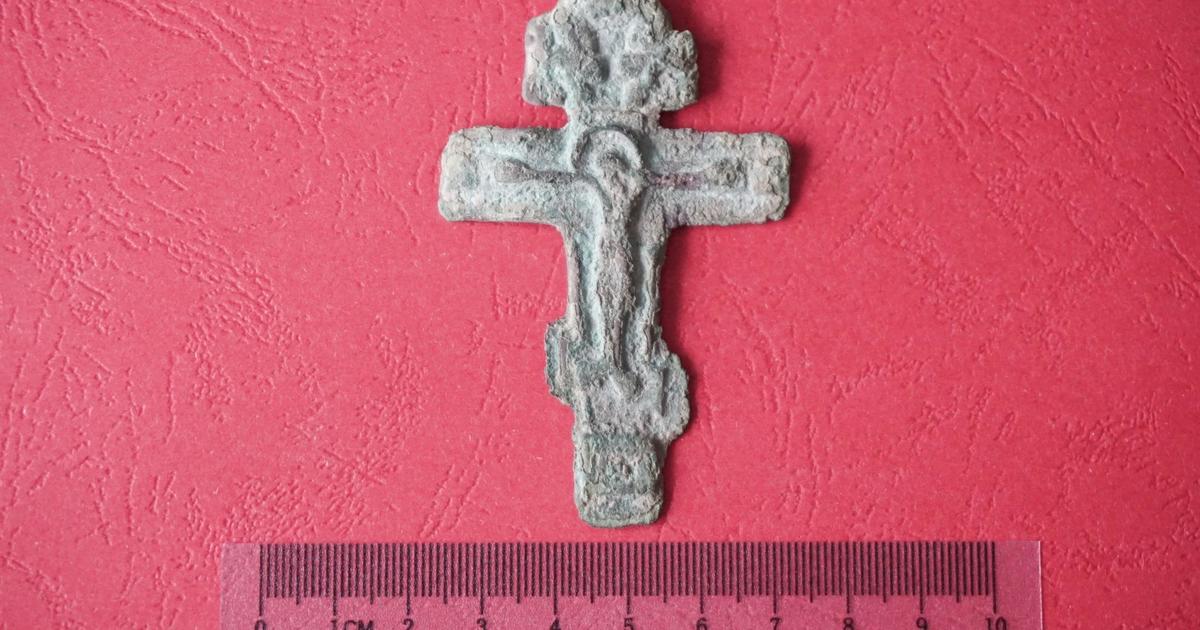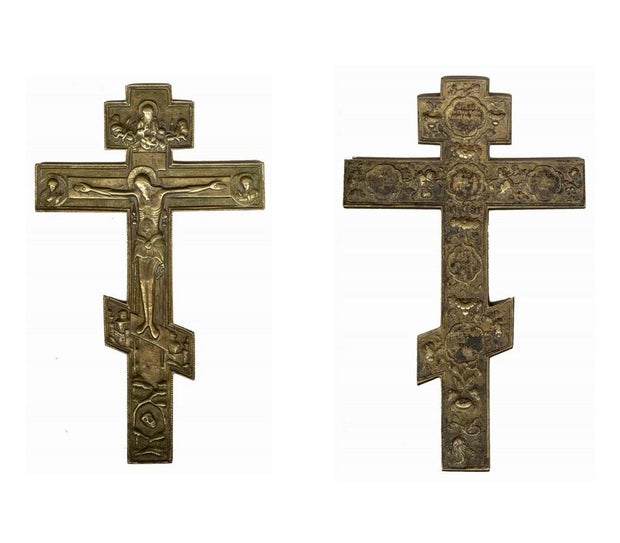A metal dectorist in eastern Poland recently uncovered a religious artifact that experts believe dates back hundreds of years. Experts said the cross icon is likely a relic of the Orthodox communities that continued to practice after a series of reforms split the Russian church in the middle of the 17th century, and an example of the kinds of symbols that were outlawed during a later monarch’s reign.
The cross, made from copper alloy, was flagged by a metal detector in Niedrzwica Duża, a commune roughly 100 miles outside of Warsaw, according to the provincial government’s monument conservation office, which said in a statement that it received the item last week. The relic was found buried in soil by Jacek Zięba, a metal detectorist who searched the area with permission from the office.
Measuring only a few centimeters from end to end, the artifact appears to be a typical biblical symbol showing Jesus nailed to the cross, with other figures etched into the peripheral space that are more difficult to decipher. The conservation office shared images of the cross and compared them with others depicting the icon as it might have looked originally.
Lublin Provincial Conservator of Monuments
Inscriptions on the back of this particular cross allowed experts to connect it to Russia’s community of Old Believers or Old Ritualists, a group of Eastern Orthodox Christians who maintained the beliefs and ritualistic practices of the old Russian Orthodox Church after an overhaul of changes were implemented around 1650. Those liturgical reforms divided the religion, with the “old believers” in the minority. But they stuck to their pre-reform customs for several centuries, even as the reigning leadership of the time and the church itself shifted in another direction.
“For the Old Believers, from the beginning of the movement, in the middle of the 17th century, icons were at the center of their religious life,” researchers wrote in a paper on the religious community’s connection to iconography and its prevalence in their private worship. The paper, published in 2019 in the theology journal Religions, noted that icons during this period served “as a material foundation of the identity of the Old Believers movement.”
Under Tsar Peter I, also known to historians as Peter the Great, the creation, sale and use of cast icons like the cross were outlawed by the Russian church. Peter the Great became the tsar of Russia — the monarch — in 1682 and ruled as emperor from 1721 until his death in 1725. According to the provincial conservation office in Poland, he would have instituted the ban on crosses cast from copper between 1723 and 1724.
Lublin Provincial Conservator of Monuments
The casts were not only used by the old believers to practice their religion, the office said. They were also sold widely and eventually purchased in public forums by ordinary people, and it was common to see one in homes across Russia. While the fundamentalist communities set roots at the turn of the 17th and 18th centuries along a portion of the Baltic Sea, another hub emerged in mainland Russia, near Moscow, about a century after that. Historians say that inland community was known for its artistic culture that produced simplistic cross icons in huge quantities.
Throughout the reign of Peter the Great, and numerous other leaders at other points in history, Russia encompassed portions of eastern Europe including Poland. Given that and the fact that Russia’s old believers settled in multiple locations at different times, experts say more work needs to be done to determine exactly when the cross was created. But it is generally believed to be around 300 years old.




